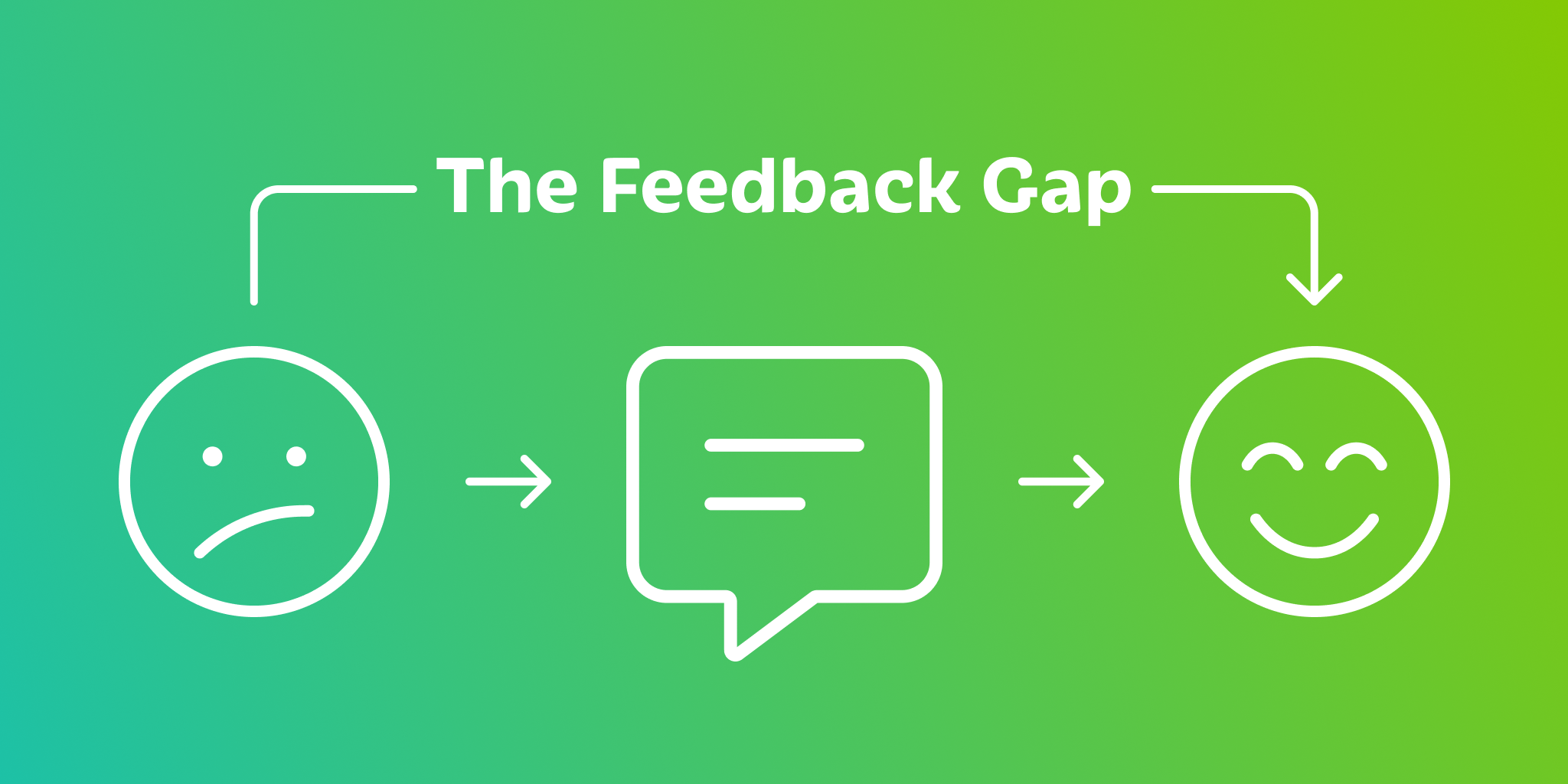Why your feedback gap is the cause of most of your talent problems
Improve business outcomes by closing the Feedback Gap. Learn how actionable feedback improves performance, retention, and engagement.
May 7, 2025

It’s harder than ever to hire and retain a high performing team.
Your organization is laying off managers in record numbers, and managers are burnt out. The ones who are left are being asked to lead bigger teams and “do more with less.”
Your high performers are getting vague praise about their contributions, but no real path to growth—so they’re leaving for better opportunities.
Your low performers aren’t being coached, they’re being avoided—further delaying improvements, exits, and weighing teams down in the process.
Employee performance across the board has stalled. You’re facing historic levels of employee disengagement. It’s tempting to blame employees with public performance shaming, but that undermines employee trust and hurts your brand.
As an HR leader, you’re stuck in clean-up mode, managing performance and communication challenges that never should have happened in the first place.
If that sounds familiar, it’s likely that your organization has a Feedback Gap. The good news is that it’s easier than ever to measure and close this gap. And, the compounding benefits will save you time and money, and help you retain your best talent.
We have a Feedback Gap—what’s a Feedback Gap?
The Feedback Gap is the distance between how your team performs today—and how exceptional they could be with the right systems and tools. Closing this gap has immediate impact that ripples through every employee performance, productivity and engagement initiative.
Here’s what closing the Feedback Gap looks like in action:
- High performers get clear and actionable feedback to help them grow to the next level instead of inflated, fixed-mindset praise like “Your energy always speaks to customers!” This kind of feedback feels good but doesn’t help them grow—or stay.
- Low performers need clear expectations (tell them what success looks like), timely input (don’t wait for their performance review to tell them where they aren’t measuring up) and consistency (actionable, constructive feedback) should be provided on an ongoing basis.
- HR helps managers identify feedback gaps early—before they turn into performance issues. Instead of running trainings once or twice a year, HR should provide ongoing guidance and tools that help managers provide regular feedback to workers that is clear, direct, and consistent.
This allows HR to play a more strategic and crucial role. They’re improving business performance by developing talent in a more proactive, sustainable way.
You’re not just losing talent. You’re losing time and money.
Research shows people who receive useless feedback are 63% more likely to quit within a year. It also shows that high performers are the ones who get the most useless feedback at work.
For more than four decades, one-off manager trainings have been the only solution to closing the Feedback Gap. The research is clear: 90% of what we learn is forgotten within a week. Without reinforcement, even the best trainings fade.
The result? You’re stuck with the illusion of development systems, but not the outcomes. High performers leave. Low performers stagnate. Teams plateau. And HR plays defense, again.
The solution isn’t more training. It’s more, better-quality feedback.
You don’t close the Feedback Gap by hoping managers magically get better at feedback. You solve it by showing them how to provide it effectively.
High-quality feedback should be:
- Rooted in specific behaviors. Instead of hackneyed commands to “be more proactive,” use examples to illustrate positive and negative points you make.
- Provided on a regular basis. An employee’s annual review should be a recap of feedback they’ve been given throughout the year, not an annual “review dump” that contains performance evaluations they’re hearing for the first time.
- Focused on outcomes, not personality traits. For example, instead of “You’re not the most organized person,” try: “In Q1, you missed two deadlines that impacted the team’s ability to complete the release. Let’s talk about how we can set milestones to stay on track.”
If you need help getting managers to provide actionable, clear feedback: That’s where systems like Textio Feedback come in.
It’s built to embed real-time coaching into your existing workflows—so that feedback becomes a daily habit, not a quarterly event.
Instead of spending time worrying about how feedback will land, managers get nudges and guidance to make it actionable, bias-free, and growth-focused—right when it matters most.
Because when feedback improves, so does performance, productivity, and engagement. Research shows people are 61% more likely to stay at an org when they understand what’s expected of them.
Closing your Feedback Gap isn’t just a nice-to-have—it’s a business imperative. When managers get the right tools to give meaningful feedback, performance improves, top talent stays, and your company is positioned to grow faster and outperform the competition.
To hear how your organization can supercharge growth by hiring the right people, watch our webinar on interview feedback here.